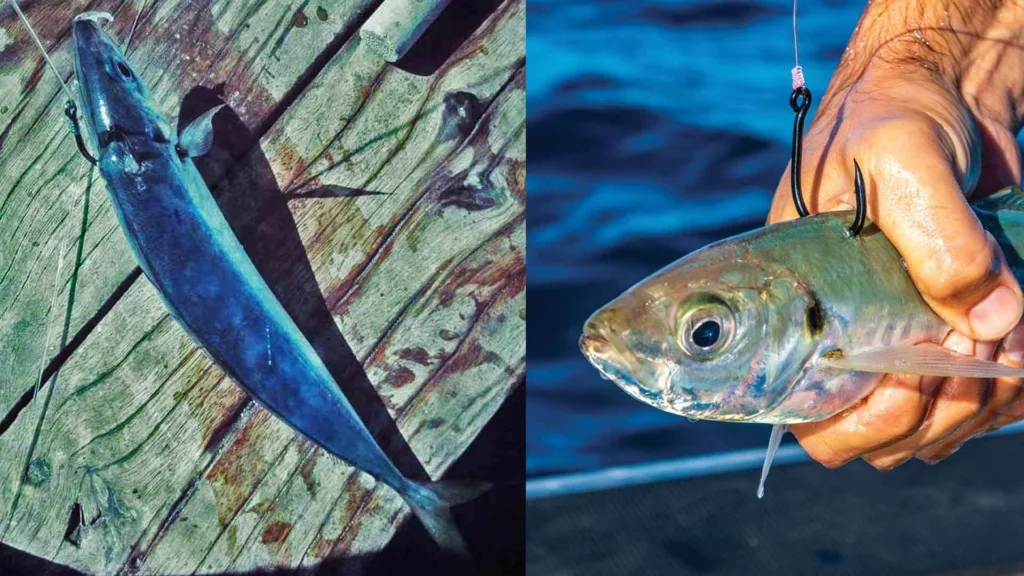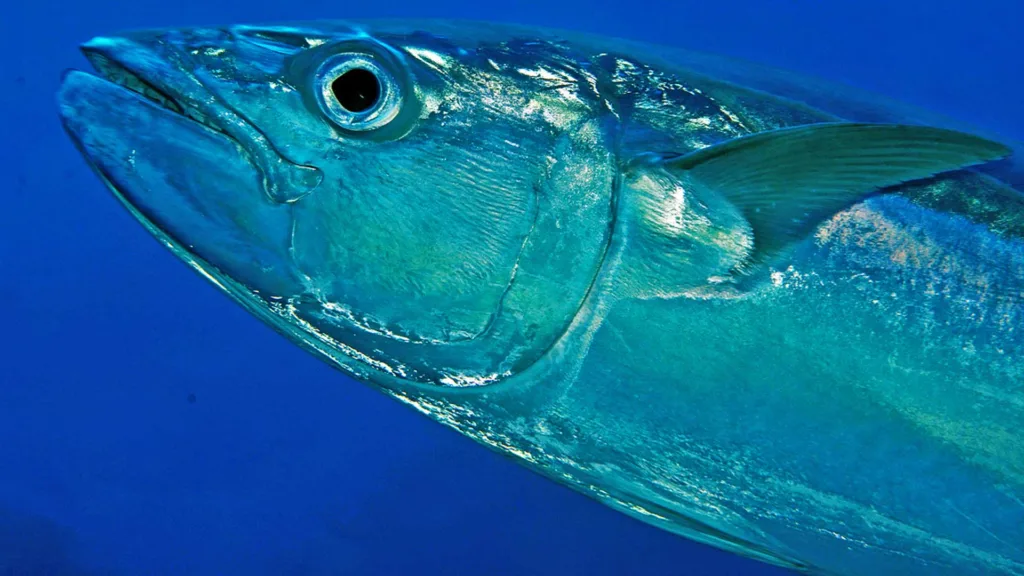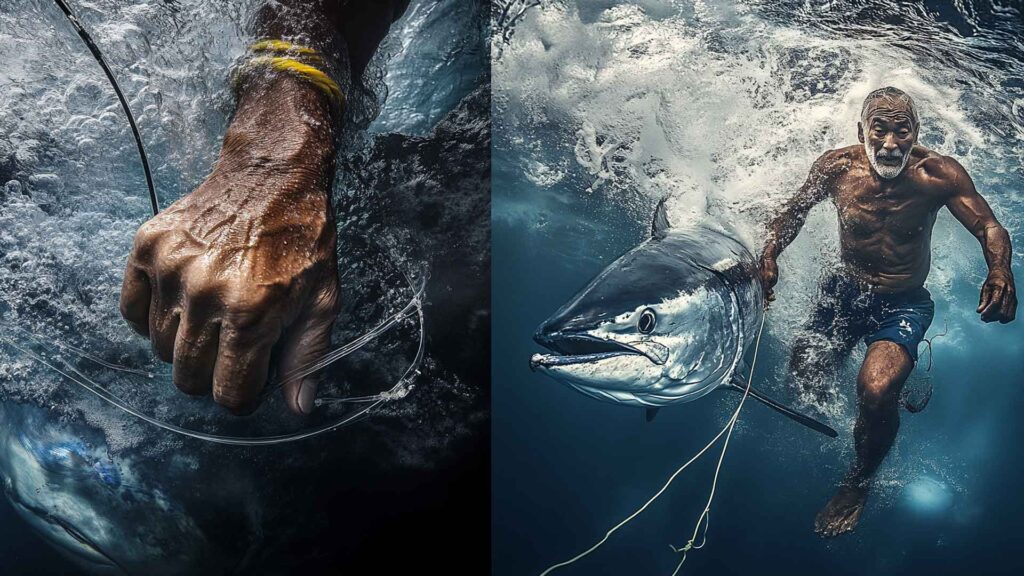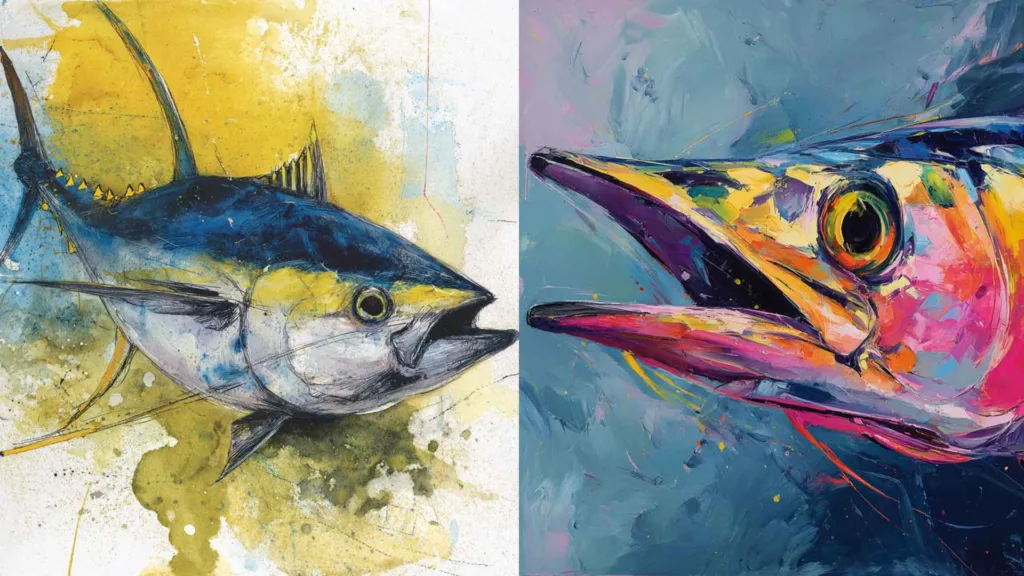
According to official Maldivian records, there are over 900 species of fish living in the Maldivian ocean. This includes over 899 species of pelagic and shore fish. These records also revealed 201 new records of fish (Randall and Anderson 1993).
The Maldives has always considered tuna, a gift from the sea’s rich biodiversity, to be the most important fish. It is significant for the country’s economy. Tunas are the most well-adapted to the oceanic environment. There are approximately eight distinct species of tuna and similar fish that are economically harvested. These fish are wahoo, sailfish, bigeye tuna, frigate tuna, little tuna, dogtooth tuna, and skipjack tuna.
Skipjack tunas (Kalhubilamas)
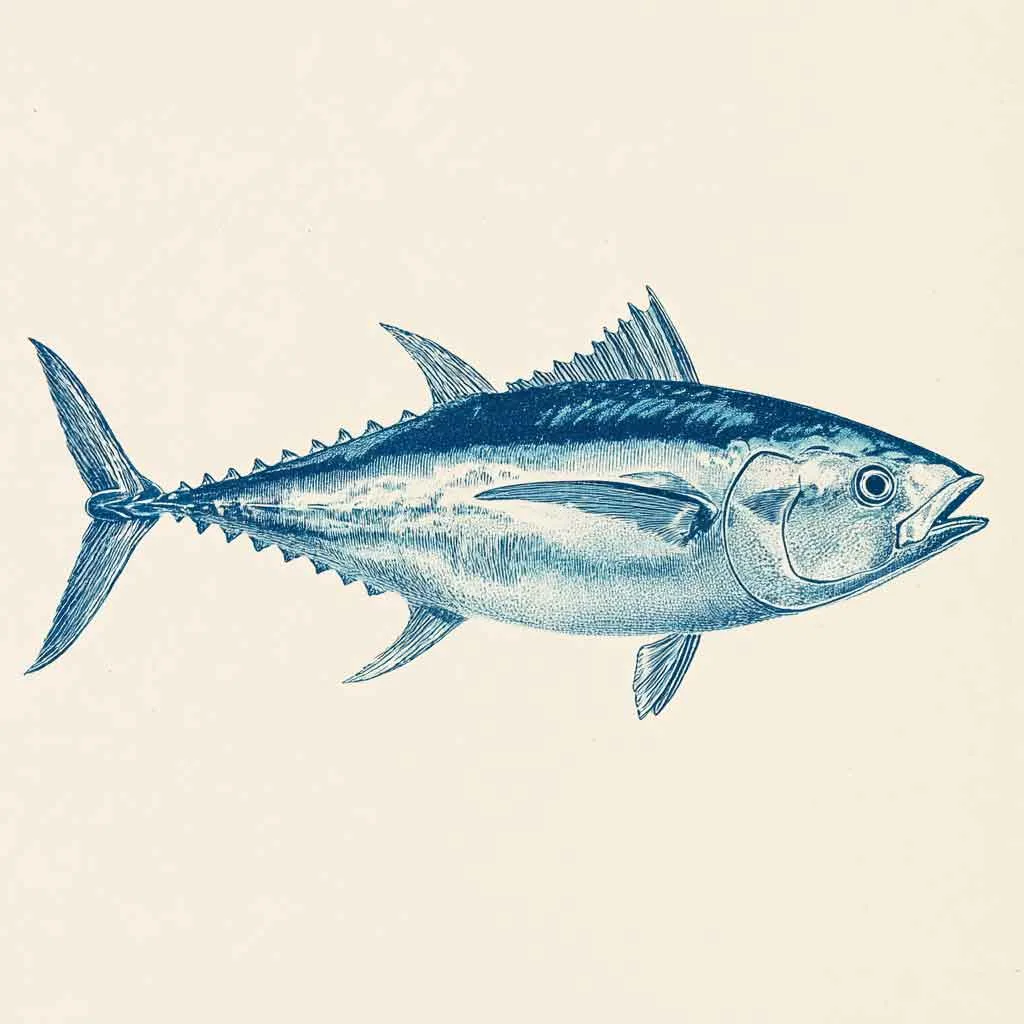
Skipjack tuna (Katsuwonus pelamis), also known locally as ‘kalhubilamas’, is the most important fish. According to official records, the skipjack tuna catch peaked in 1994 at 70000 t. The primary method for landing this fish is traditional pole-and-line fishing, which involves catching one fish at a time. The larger tuna fish is known locally as ‘Godha’, and the smaller one as ‘mas’. Skipjack tuna is found in the uppermost layer of the ocean. They are found in the open sea. They form massive schools. Skipjack tuna feeds on small fish, cephalopods, and crustaceans.
Yellowfin Tuna (Kanneli)
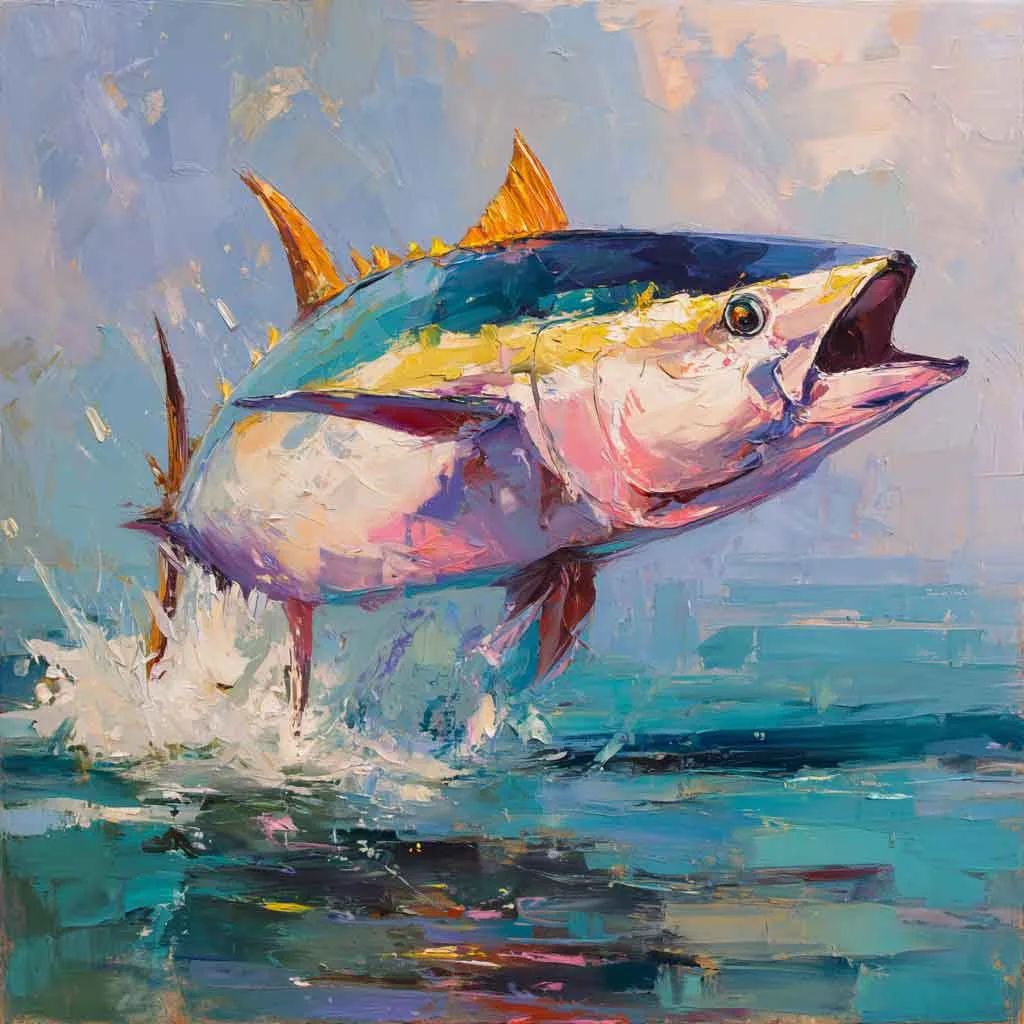
Yellowfin tuna (Thunnus albacares) is sleek and powerful. The appearance is metallic silver with bright yellow fins. This fish is built for speed and endurance. It has a top speed of 70 km/h and can travel long distances. Yellowfin tuna is the second most important species of fish caught in the Maldives, after skipjack.
This fish is also caught using traditional pole-and-line techniques. The vast majority of yellowfin tuna in Maldivian waters are juveniles that swim on the surface. Handlines are also used to catch yellowfin tuna, particularly large individuals. The large yellowfin tuna is also landed using a double pole in mechanised vessels. In the Maldives, yellowfin tuna is most prevalent in regions like Haa Alifu Atoll and the Malé region. The southern atolls are also a hot spot for yellowfin tuna fishing.
Bigeye tuna (Loabodu Kanneli)

In tuna fisheries, bigeye tuna (Thunnus obesus) is caught in small quantities. There are no outstanding records for catching bigeye tuna. The Maldives has an effective tuna fishery statistics system, but bigeye tuna catches are not recorded separately. Most bigeye tuna caught are mixed with yellowfin tuna.
According to Anderson and Hafiz (1991), bigeye tuna accounts for a small proportion of Maldivian tuna catch and appears to be more common in the south than in the north. The domestic catch of bigeye tuna is primarily juvenile, caught by pole and line, but there are also catches by trolling, handline, and longline. Bigeye tuna is more common in the southern Maldives.
Frigate tuna (Raagondi)
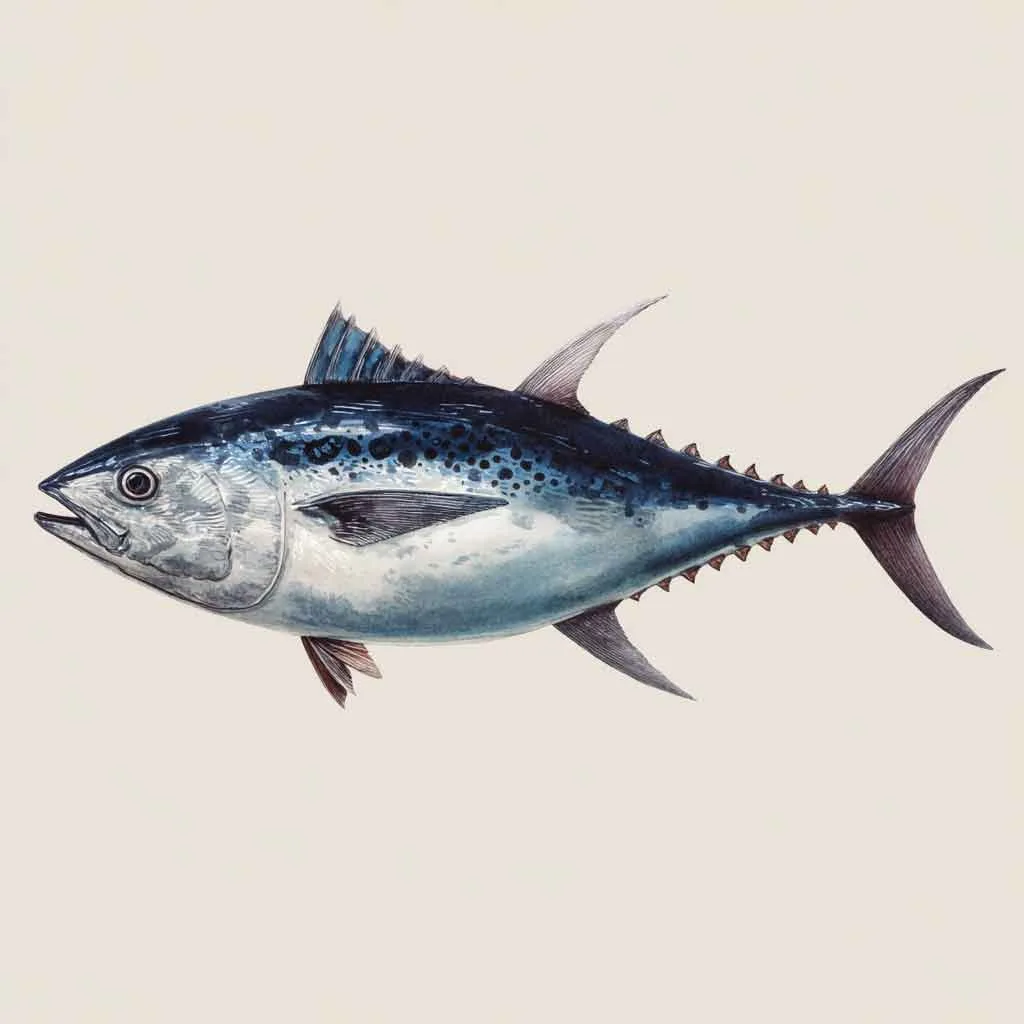
Frigate tuna is a neritic species that is frequently caught as bycatch or incidental in the country’s pole-and-line skipjack fishery. According to previous records, the nominal catch of frigate tuna decreased to 2900 t in 2010 from 5200 t in 2009.
Frigate tuna’s contribution to the nation has been minimal. Previous records show that from 1970 to 1997, frigate tuna accounted for 8% of the total tuna catch. The third most important species is frigate tuna. This fish is a small species, measuring 57 cm.
Little Tuna (Latti)
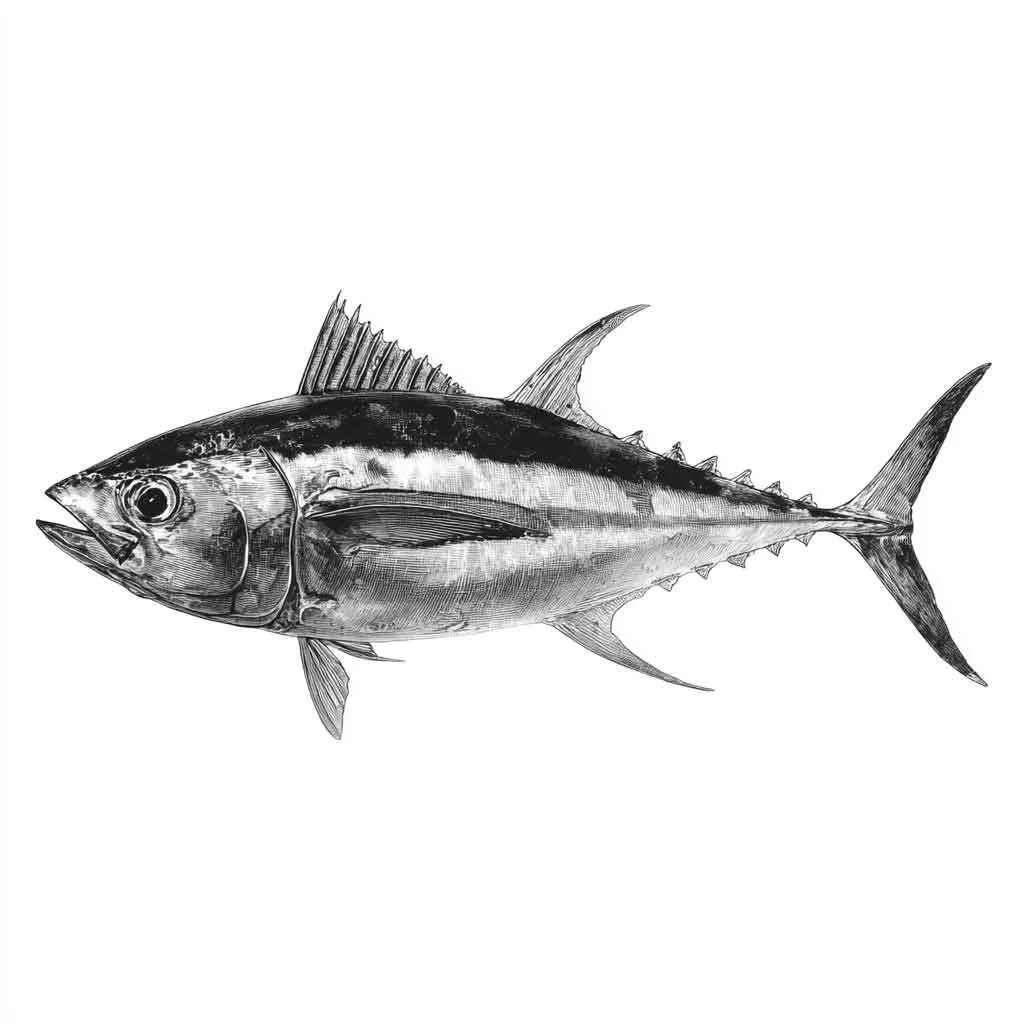
This fish is also known as kawakawa. It is also called eastern little tuna. This species is the fourth-most important fish. The only places to find little tuna are in the atoll and near-atoll waters. A large portion of the catch comes from inshore and nearshore waters, as well as anchored FADs. Recently, frigate tuna and kawakawa landings in the Maldives have also begun to decline. Skipjack tuna accounted for approximately 75% of the total tuna catch in 2010, followed by yellowfin at 17% and kawakawa and frigate at nearly 18%.
Dogtooth Tuna (Woshimas)
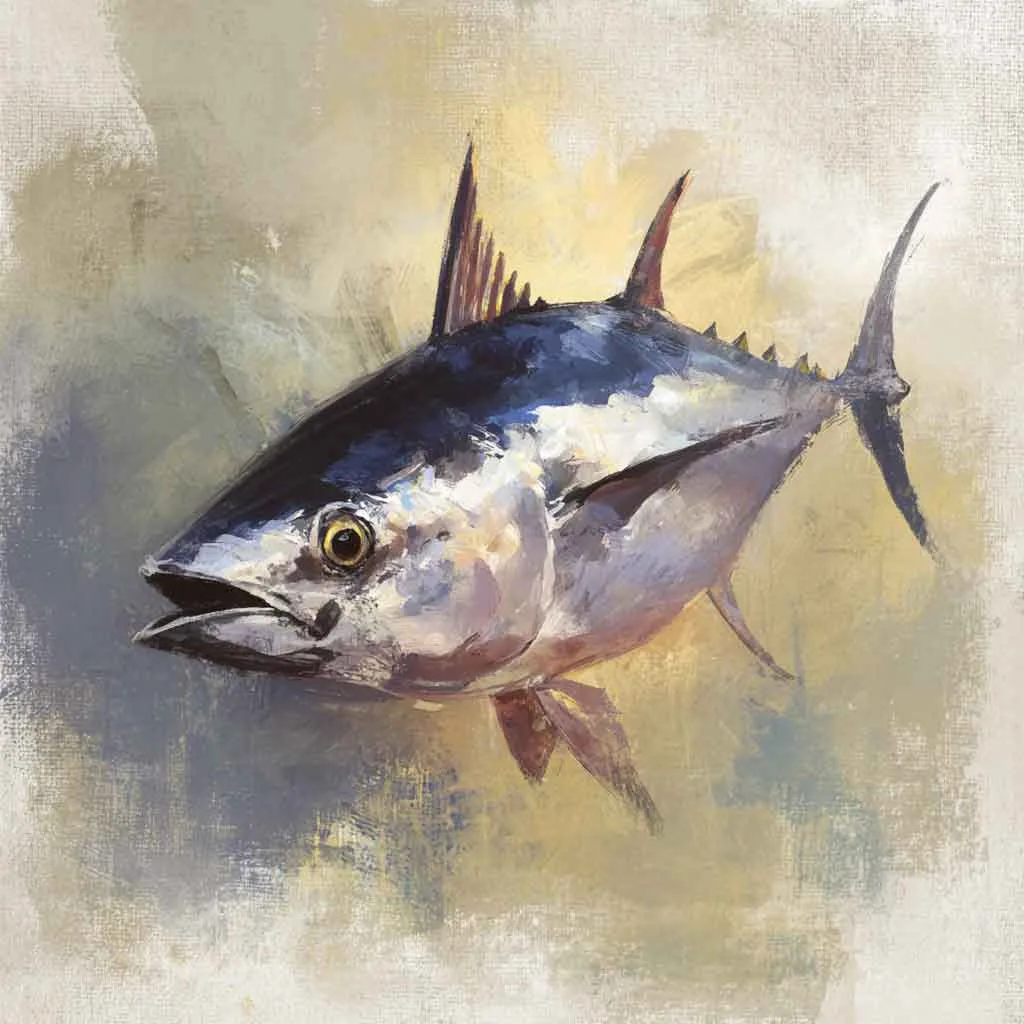
Dogtooth tuna is an elongated, moderately compressed fish. It’s grey in appearance. Its backside is blue-black and fades to silvery below. The tips of the second dorsal and anal fins are white. Dogtooth is an epipelagic species that usually lives near coral reefs. It is usually solitary or found in small groups. This species is a voracious predator that feeds on small schooling fish and squid. It’s associated with coral reefs. Dogtooth is caught through trolling and handlining. Dogtooth is a prized catch in spearfishing.
Wahoo (kurumas)
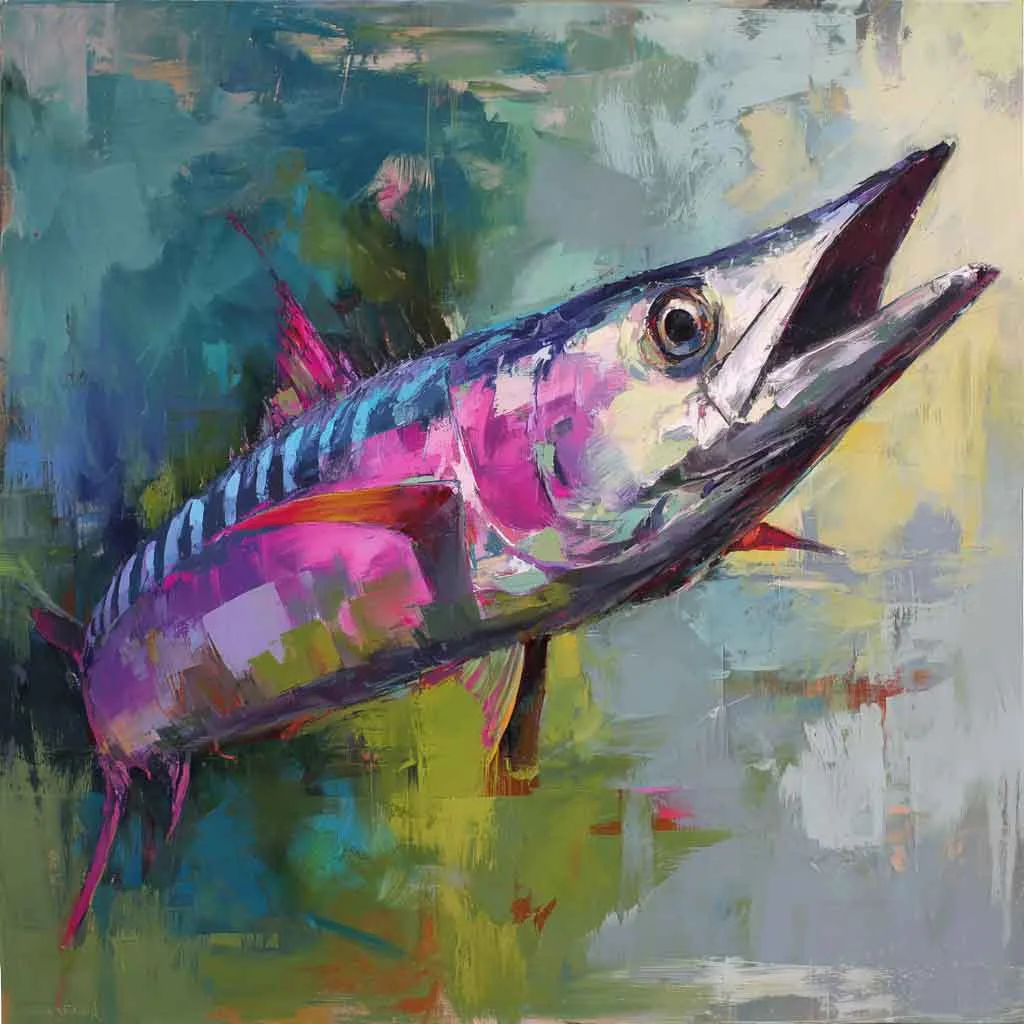
Wahoo (Acanthocybium solandri) is one of the most popular fish in the Maldives. It is mostly caught by trolling. The wahoo is capable of reaching speeds up to 80 kilometres per hour. This iconic fish is truly a marvel of the sea. Wahoo is known for its agility and endurance.
Wahoo is an important fish in the ecosystem. It belongs to the Scombridae family. Wahoo significantly contributes to the rich culture of the Maldives. It is a delicious fish. Wahoo highlights the Maldives’ extraordinary biodiversity.
Sailfish (Fangandu Hibaru)
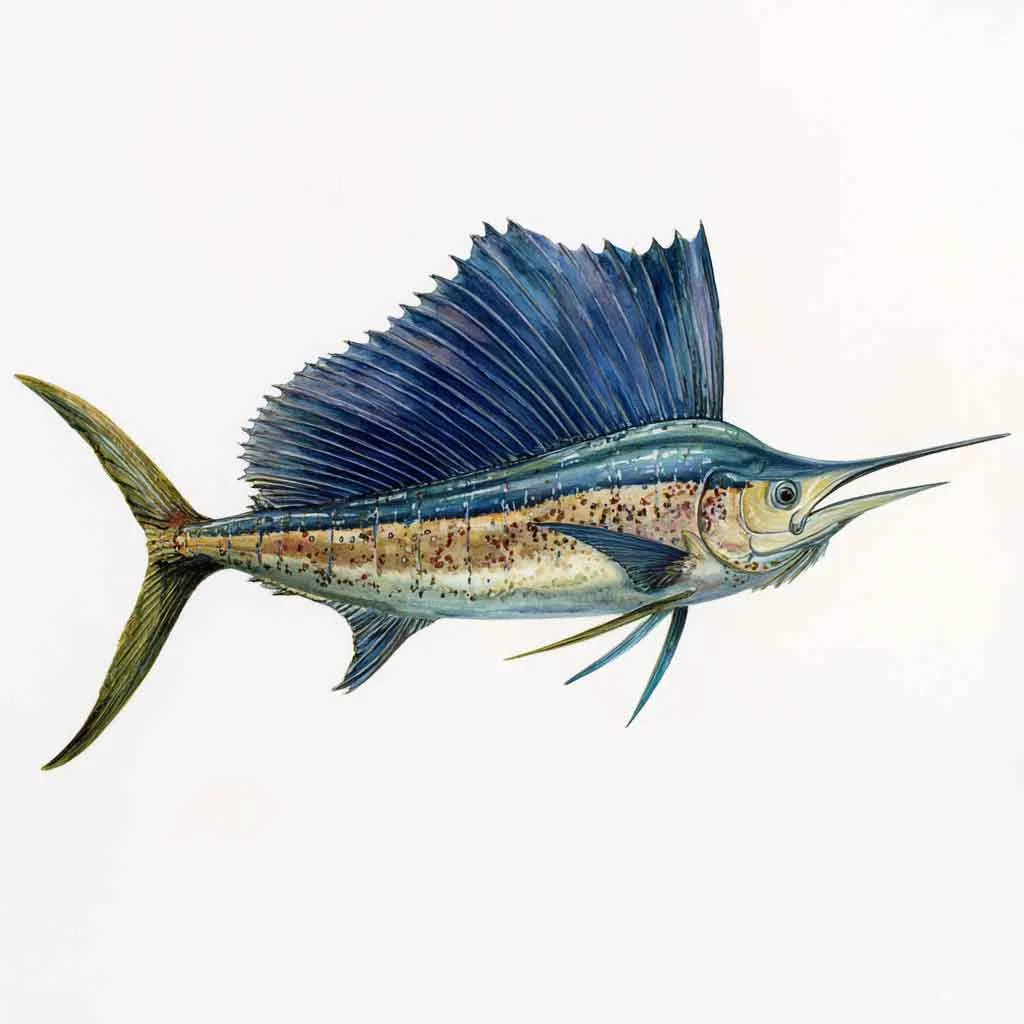
The most common billfish caught in the Maldives is the sailfish (Istiophorus platypterus). It is locally known as ‘fanganduhibaru’. The sailfish is commonly found on and around the atolls. It belongs to the family Istiophoridae. Sailfish is an oceanic species that is epipelagic and migrates extensively. Sailfish feed on a wide range of fish and crustaceans. This species is primarily caught by trolling or drifting with live bait.


